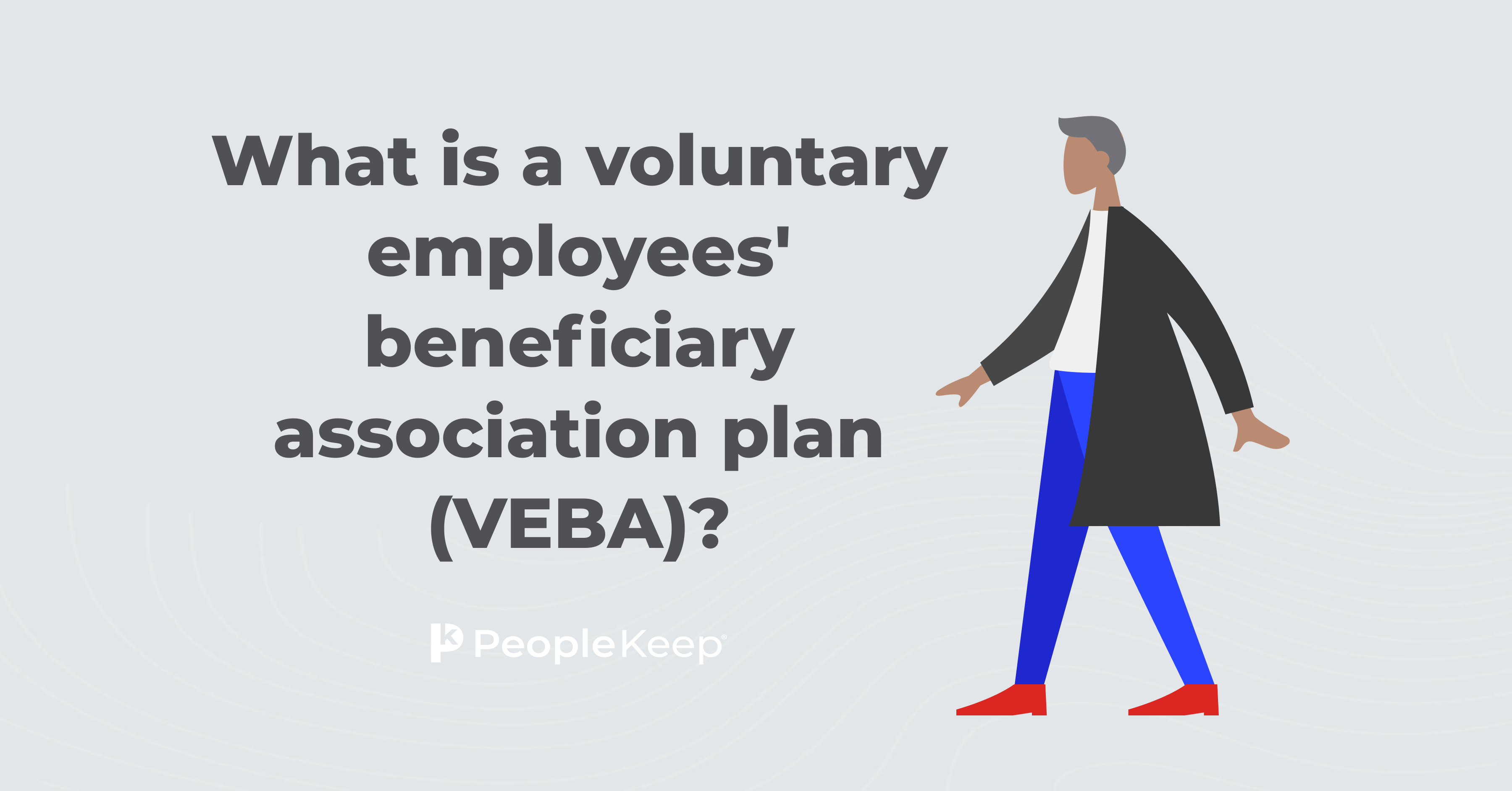What is GAP insurance?
By Holly Bengfort on April 20, 2023 at 8:51 AM
Because many traditional group health insurance plans are often pricey and rigid for employers and employees, some business owners may look to other health benefits options to get the most out of their budget. GAP insurance is one way to help you cover the cost of medical care for your employees.
GAP health insurance plans aren’t major medical insurance. Since GAP insurance isn’t considered qualifying coverage by the Affordable Care Act (ACA), it's not suitable as a replacement for primary health insurance. Instead, it's used as a supplementary insurance policy alongside a high-deductible health plan (HDHP) to cover your employee's medical expenses before they meet their deductible.
In this article, we'll explain how GAP insurance works, what it covers, and whether or not it's a good option for your organization.
How does GAP insurance work?
GAP insurance is meant to bridge the "gap" in health insurance coverage. This type of plan is also referred to as “metal gap insurance” since it fills the coverage gaps in the metallic tiers of healthcare coverage, specifically the bronze and silver ACA-approved health insurance plans. This is because bronze and silver plans often come with lower premiums and higher out-of-pocket costs when you need care.
GAP health insurance plans help your employees manage their out-of-pocket expenses without draining their bank accounts. The premiums are paid to cover portions of out-of-pocket medical expenses under a group health insurance plan. Generally, an employer may pay (or allow employees to pay) for GAP health insurance to supplement an HDHP.
GAP health insurance requires payment of an insurance premium, or expense, that you or your employees will cover regardless of actual medical utilization.
With GAP health insurance plans, you can extend healthcare coverage, offset out-of-pocket costs, and protect your employee's income.
In return, the GAP health insurer may make lump-sum cash payments directly to your employees rather than their medical provider. This means they can use their money when and how they see fit.
Common misunderstandings regarding GAP insurance
Health coverage can be tricky, and there's often confusion surrounding certain abbreviations or terms. To avoid misunderstandings, we're sharing a few more details and explanations below.
Here are some similar terms not to be confused with GAP insurance:
- Short-term health insurance (STM): This is a medical plan used when there's a gap in health insurance coverage, such as when people are in-between jobs. A short-term health insurance plan is temporary insurance that operates when no main medical plan is currently in place. If there was a gap in coverage, someone could face expensive medical bills if they were to get into an accident or suffer a medical emergency.
- Guaranteed asset protection (GAP) coverage: This is a standard automotive policy that pays the current market value of a vehicle at the time of a claim.
- Coverage gap: In terms of the ACA, the coverage gap exists in states that haven’t adopted the ACA Medicaid expansion for people who aren’t eligible for Medicaid coverage or subsidies in the federal Health Insurance Marketplace.
- Medicare Part D coverage gap: This is sometimes called the “donut hole." It's a temporary limit on drug coverage under Medicare Part D drug plans.
What does GAP insurance cover?
Since GAP insurance plans are supplementary, they cover a limited range of medical services. It's focused more on urgent care rather than preventive care.
There are different plan options to choose from, and benefits vary by policy, but most tend to focus on critical illnesses or accidents. This includes things like a heart attack, stroke, or car accident where unplanned or emergency care is needed.
Within those situations, GAP benefits can cover several expenses, such as medical deductibles, copayments, and doctor visits outside the provider network. Depending on the policy, it could also cover living expenses such as housing, food, and transportation.
Many GAP health insurance plans include accident plans, critical illness plans, and hospital indemnity plans.
Much like shopping around for traditional health insurance, you'll want to compare GAP insurance providers and plan details before making a final decision.
When should you consider using GAP insurance?
For many individuals, GAP plans are a solid solution to the dilemma of high health insurance costs.
If you're looking to save your employees money on medical bills, a GAP insurance policy helps reduce extreme out-of-pocket costs. It also gives them peace of mind for the unexpected in life.
Plus, if you offer an HDHP with a health savings account (HSA), a GAP plan helps your employees who don't have enough funds built up in their HSA to cover their expenses.
Also, GAP plans help you prepare for the worst-case scenario. If you have employees with health issues, they have a high probability of needing more consistent or serious medical care. GAP insurance provides more coverage for accidents and unplanned events.
GAP health insurance vs. health reimbursement arrangements
GAP health insurance can greatly help your budget, but they don't always work for every employer's situation.
Another option that you can use to stretch healthcare dollars is a health reimbursement arrangement (HRA). An HRA isn’t health insurance. It's an IRS-approved, employer-funded, tax-free health benefit that allows employers to reimburse employees for out-of-pocket medical costs and sometimes individual insurance premiums.
Many organizations prefer HRAs to GAP coverage for the following reasons:
- No premiums are paid to a health insurance carrier with an HRA
- Employers control all HRA reimbursements and plan design
- An HRA can cover more eligible expenses than a GAP insurance policy (or be more limited based on the employer’s plan design)
- HRA expenses are based on actual utilization, and the business keeps unused funds at the end of the plan year
- Minimized administration hassle and employee confusion
The HRA option most similar to GAP insurance is a group coverage HRA (GCHRA). The GCHRA is specifically designed for small to midsize employers offering a group health insurance plan. With the GCHRA, you can offer both group health insurance and an HRA together to cover the costs not fully covered by the group health insurance plan. This allows you to help employees pay for their deductibles and other out-of-pocket expenses.
Conclusion
If you're a business owner looking for affordable solutions to health-related spending, supplemental insurance plans can help. Since GAP health insurance bridges the "gap" in primary health insurance coverage, it can offset out-of-pocket expenses before your employees reach their deductible. GAP benefits cover medical costs like deductibles, copayments, doctor visits outside the provider network, and more, depending on your coverage type.
If you want to help your employees with their out-of-pocket health expenses and are hesitant to offer GAP insurance, consider using an HRA. Many employers prefer to offer GCHRAs as an alternative to GAP insurance because of the budget control, tax advantages, and flexibility that this type of coverage has to offer.
Check out more resources
See these related articles

What is a voluntary employees' beneficiary association plan (VEBA)?
In this article, we’ll go over the basics of a VEBA, how they work, their pros and cons, and how they differ from health reimbursement arrangements (HRAs).

How Medicare premiums are calculated
Understanding how your Medicare premiums are calculated can help you plan your healthcare finances. We'll go over what Medicare is and its current rates.

What is accident insurance?
Accident insurance provides financial protection if you have an unexpected injury. Learn more about what accident insurance covers and why it's important.


